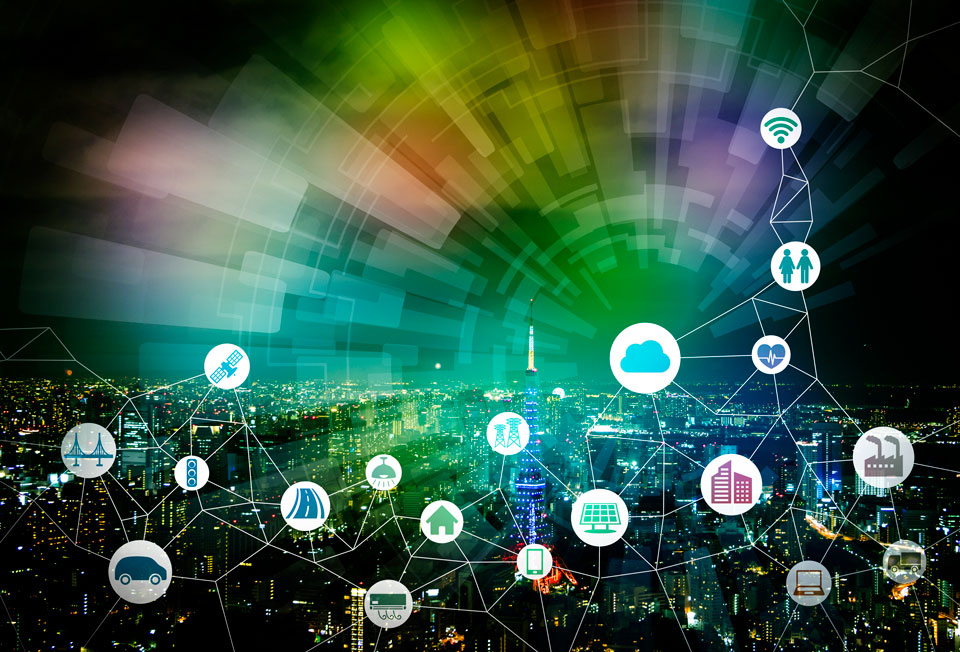How can Industry 4.0 meet the demands of an increasingly interconnected world? There is a moment of breathless anticipation that every first-time parent experiences: that split second when you try to figure out if your little one is going to laugh, cry, or throw up. Sometimes, they do all three.
copyright by thebossmagazine.com
 As the world moves into the fourth industrial revolution that is giving rise to Industry 4.0, we are in that same exact holding pattern—but not for long. “The speed of current breakthroughs has no historical precedent. When compared with previous industrial revolutions, the Fourth is evolving at an exponential rather than a linear pace,” shared Klaus Schaub , founder of the World Economic Forum. “Moreover, it is disrupting almost every industry in every country. And the breadth and depth of these changes herald the transformation of entire systems of production, management, and governance.”
As the world moves into the fourth industrial revolution that is giving rise to Industry 4.0, we are in that same exact holding pattern—but not for long. “The speed of current breakthroughs has no historical precedent. When compared with previous industrial revolutions, the Fourth is evolving at an exponential rather than a linear pace,” shared Klaus Schaub , founder of the World Economic Forum. “Moreover, it is disrupting almost every industry in every country. And the breadth and depth of these changes herald the transformation of entire systems of production, management, and governance.”
It’s All About Data
The Industry 4.0 revolution is data driven and akin to the Internet of Things. In 2015, McKinsey identified four major disruptions that drive Industry 4.0. Chief among them is the unprecedented amount of data that is being collected, processed, and analyzed for business intelligence. The evolution of analytics, new forms of human-computer interaction, and improvements in translating digital instructions to the physical world, such as advanced robotics and 3D printing, round out their list.
What Modern Customers Expect
The shift in customer expectations over the past decade is perhaps one of the biggest drivers of this new phase in our industrial history. The expectation of lightning-speed responsiveness is heightened with each digital advance. In the developed world, the ease of connecting is giving rise to more demanding B2B and B2C consumers who expect nothing less than precisely customized experiences delivered on their schedules.
Enhancing the Supply Chain Ecosystem
At the heart of Industry 4.0 is pure connection. As products evolve to meet stringent consumer demand, so must the supply chain that created them. The supply chain as we know it is made up of isolated steps from the moment a product is envisioned to the moment it reaches the end of its life cycle. Industry 4.0 integrates those steps into a cyber-physical system that is infinitely more flexible and responsive than traditional supply chains. These intelligent ecosystems support automated manufacturing technologies. New technologies in cognitive computing cross boundaries to create smart value chains throughout a product’s life cycle, from ideation and R&D to marketing, manufacturing, distribution, and beyond. The era of the smart factory is here. […]
read more – copyright by thebossmagazine.com


How can Industry 4.0 meet the demands of an increasingly interconnected world? There is a moment of breathless anticipation that every first-time parent experiences: that split second when you try to figure out if your little one is going to laugh, cry, or throw up. Sometimes, they do all three.
copyright by thebossmagazine.com
It’s All About Data
The Industry 4.0 revolution is data driven and akin to the Internet of Things. In 2015, McKinsey identified four major disruptions that drive Industry 4.0. Chief among them is the unprecedented amount of data that is being collected, processed, and analyzed for business intelligence. The evolution of analytics, new forms of human-computer interaction, and improvements in translating digital instructions to the physical world, such as advanced robotics and 3D printing, round out their list.
What Modern Customers Expect
The shift in customer expectations over the past decade is perhaps one of the biggest drivers of this new phase in our industrial history. The expectation of lightning-speed responsiveness is heightened with each digital advance. In the developed world, the ease of connecting is giving rise to more demanding B2B and B2C consumers who expect nothing less than precisely customized experiences delivered on their schedules.
Enhancing the Supply Chain Ecosystem
At the heart of Industry 4.0 is pure connection. As products evolve to meet stringent consumer demand, so must the supply chain that created them. The supply chain as we know it is made up of isolated steps from the moment a product is envisioned to the moment it reaches the end of its life cycle. Industry 4.0 integrates those steps into a cyber-physical system that is infinitely more flexible and responsive than traditional supply chains. These intelligent ecosystems support automated manufacturing technologies. New technologies in cognitive computing cross boundaries to create smart value chains throughout a product’s life cycle, from ideation and R&D to marketing, manufacturing, distribution, and beyond. The era of the smart factory is here. […]
read more – copyright by thebossmagazine.com
Share this: